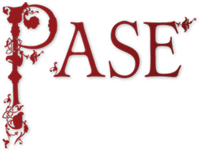Table of Contents
Top of page
Name
Summary
Distribution Map
Property List
Profile
Bibliography
Bottom of page
Gerald 5
Gerald of Wilton (Wilts.), fl. 1066x1086
Male
DWP
4 of 5
Summary
Gerald 5 of Wilton was a priest who held a large estate in south-west Wiltshire TRE assessed at 10 hides and with a value of £10. He retained this estate in 1086, when he held it in alms from King William (William 1), and by then had also acquired the tithes of a derelict church in east Wiltshire.Distribution map of property and lordships associated with this name in DB
List of property and lordships associated with this name in DB
Holder 1066
| Shire | Phil. ref. | Vill | DB Spelling | Holder 1066 | Lord 1066 | Tenant-in-Chief 1086 | 1086 Subtenant | Fiscal Value | 1066 Value | 1086 Value | Conf. | Show on Map |
|---|---|---|---|---|---|---|---|---|---|---|---|---|
| Wiltshire | 18,1 | Upton Lovell | Giraldus | Gerald of Wilton | - | Gerald of Wilton | - | 10.00 | 10.00 | 10.00 | A | Map |
| Totals | ||||||||||||
Tenant-in-Chief 1086 demesne estates (no subtenants)
| Shire | Phil. ref. | Vill | DB Spelling | Holder 1066 | Lord 1066 | Tenant-in-Chief 1086 | 1086 Subtenant | Fiscal Value | 1066 Value | 1086 Value | Conf. | Show on Map |
|---|---|---|---|---|---|---|---|---|---|---|---|---|
| Wiltshire | 18,1 | Upton Lovell | Giraldus | Gerald of Wilton | - | Gerald of Wilton | - | 10.00 | 10.00 | 10.00 | A | Map |
| Totals | ||||||||||||
Profile
Gerald 5 is referred to in DB as Gerald of Wilton (Giraldus de Wiltune) and as Gerald priest of Wilton (Giraldus presbiter de Wiltone). The most straightforward interpretation of his continental name, his byname and status is that he was at one time a priest associated with a church in the borough and shire town of Wilton, in south Wiltshire. By far the most important church in Wilton at that time was that of St Mary’s abbey, in the patronage of Queen Eadgyth (Eadgyth 3), which although being a nunnery would still have required the services of a non-resident priest (Pugh and Crittall 1956: 231-42; Knowles et al. 2001: 222-3, 297).Gerald 5’s large TRE estate was at ‘Upton’, which the Wiltshire IG show to have been Upton Lovell on the River Wylye in south-west Wiltshire and about 12 miles upstream from Wilton (Pugh and Crittall 1955: 189-91; Thorn and Thorn 1979: DB 18,1 Notes). If so then considerable weight is added to the suggestion that Gerald served Wilton Abbey, because a charter of King Eadwig 4 granting 10 mansae at Upton (Lovell) to his minister Æthelræd 30 in 957 was preserved in the abbey’s fourteenth-century cartulary (S 642; Birch 1885-99: no. 992). This implies that the abbey subsequently acquired the estate but had then lost or alienated it before the Conquest, because it is not listed or claimed among the abbey’s fief in DB. In any event, the 10 hides at Upton were in Gerald’s hands by 1066 and were still held by him in 1086, when he was said to hold them in alms from King William 1.
In 1086 the estate at Upton was probably managed for a mix of arable and pastoral farming. Gerald held just under 6½ of the 10 hides in demesne, with three ploughs and a workforce of four slaves, while on the rest of the estate were another three ploughs and a dependent peasant population of nine villans, 6 bordars, 4 cotsets and their households. As well as the ploughs for the arable there were also 15 acres of meadow and a large area of pasture, in addition to which Gerald had a mill, presumably on the River Wylye.
By 1086 Gerald had also acquired the right to the tithes from the church at Collingbourne Ducis, on the River Bourne in the east of Wiltshire and about 16½ and 20 miles respectively from Wilton and Upton Lovell. DB describes the church as being then ‘waste and dismantled’ (uasta est et dissipata), although it is not apparent if its state was the result of or the reason for its tithes being granted to Gerald, presumably by King William, who held the manor after the Conquest.
Lewis (1995: 141) regarded Gerald 5 as a different person from Gerald 4 and was probably correct to do so. Nevertheless, although their TRE lands were about 35 miles apart that of Gerald 5 was large enough for this distance not to be an insurmountable obstacle to identification; and, given the extreme rarity of the name Gerald in pre-Conquest England it remains conceivable that they were the same person.
Bibliography
Birch 1885-99: W. de Gray Birch, Cartularium Saxonicum, 3 vols and index (London, 1885-99)
Knowles et al. 2001: D. Knowles, C. N. L. Brooke and V. C. M. London, eds., The Heads of Religious Houses in England and Wales: I: 940-1216, 2nd edn (Cambridge, 2001)
Lewis 1995: C. P. Lewis, ‘The French in England before the Norman Conquest’, Anglo-Norman Studies 17 (1995), 123-44
Pugh and Crittall 1955: A History of Wiltshire: Volume II, ed. R. B. Pugh and E. Crittall (London, 1955)
Pugh and Crittall 1956: A History of Wiltshire: Volume III, ed. R. B. Pugh and E. Crittall (London, 1956)
S: P. H. Sawyer, Anglo-Saxon Charters: An Annotated List and Bibliography, Royal Historical Society Guides and Handbooks 8 (London, 1968), revised by S. Kelly, R. Rushforth et al., The Electronic Sawyer: Online Catalogue of Anglo-Saxon Charters, published online through Kemble: The Anglo-Saxon Charters Website, currently at http://www.esawyer.org.uk/about/index.html
Thorn and Thorn 1979: Domesday Book 6: Wiltshire, ed. C. Thorn and F. Thorn (Chichester, 1979)
